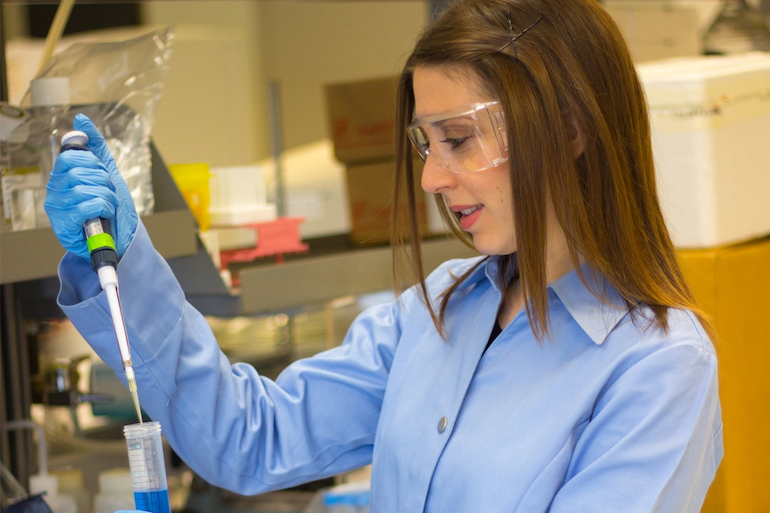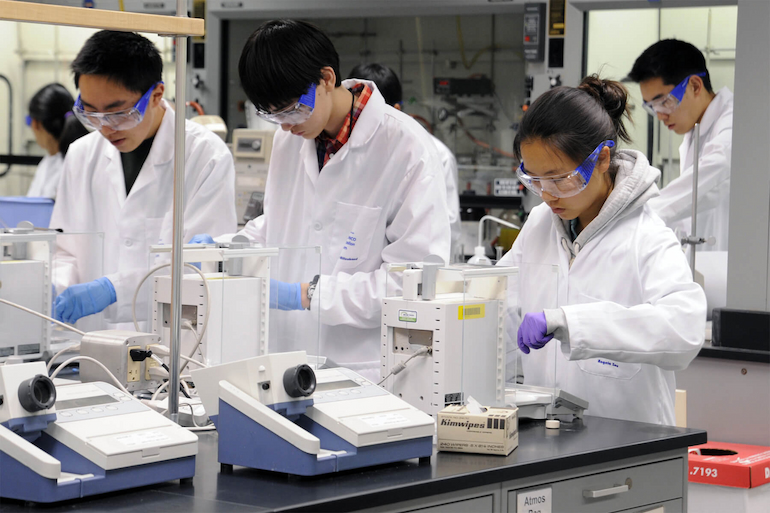Your Guide to Choosing the Best Lab Coat
A lab coat of one of the essentials for protecting workers in a laboratory or a clinic. You have to wear them all the time to be safe from accidental spills and unwanted contact with substances.
They provide skin protection, prevent the spread of contamination, and have a removable barrier between you and the hazardous substances. Plus, they give you a professional look.
How to Choose the Right Size?
Shoulder Width
The lab coat you buy should be properly fitted over the shoulders. You’ll need to move, turn and lift your arms up and down, so the coat must recreate those movements and not restrict them. Its seam has to be as broad as your shoulders, if not a little wider, to give you the proper comfort level and movement range.
Sleeves

When it comes to sleeves, no area between the end of the sleeve and your gloves or your flesh should be exposed. The sleeve should also not be overly lengthy. When your hands are down, and the sleeve stretches over your wrist, it’s quite long and may affect your work. You can measure your sleeve length by laying your arms straight, and someone will measure from the middle of your neck to the end of your arm. This way, you’ll get the proper sizing.
Total Length
Your coat shouldn’t be too long or too short. This can vary according to personal preferences or the workplace dress code, so when it comes to lab coats buy the appropriate ones. Their length should be around the middle of your thigh or just past your hip. Try out different fits and sizes to see what suits you best. If you can’t find the right size, you can always have it custom made and altered to your needs.
Circumference
The circumference of your lab coat should allow you to fasten it completely with buttons, Velcro, zips or snap fasteners. Always go up a size if you plan on layering with jumpers or hoodies on the inside. Nowadays, there are lab coats specially designed for women because of their different physiques and body size.
What Are the Best Materials for a Lab Coat?

In order to create a balance between the price and the level of protection these lab coats offer, manufacturers combine two or more materials to get the perfect blend. Each version has its resistance levels and protection purposes, so you’ll need to find out what is yours and choose the coat.
Cotton
As we all know, cotton is one of the most breathable and comfortable materials. These lab coats are mostly used in clinics and laboratories with biological materials. It provides protection from splashes of chemicals and liquid, but you must remember that cotton is not flame resistant unless they’re blended or treated with some other materials.
Polyester
Polyester has one advantage over cotton; it’s a little liquid resistant. This makes the coat easy to wash and dry than most materials, and it’s more affordable than cotton. But beware, polyester lab coats shouldn’t be around open flames and pyrophoric chemicals. If they do come in touch with fire, there could be a lot of damage done.
Nylon
Nylon is a very lightweight material, and it’s very strong and durable. It can handle the elements well and offers liquid protection, but not as much as polyester does.
Modacrylic
This is a great synthetic material if you work around flammable chemicals. It’s flame-resistant and protects you against chemicals and solvents.
Rayon
Rayon is more affordable than cotton, but it’s not fire-resistant. It won’t keep liquids and acids away because it’s made from wood pulp.
Polypropylene
This is a material used for disposable lab coats. Similar to cotton, it’s lightweight and breathable and can absorb moisture. It’s used in environments with no hazardous materials, such as cleanrooms or in animal shelters and handling because it’s highly flammable.
Nomex
This is the ultimate lab coat fire resisting material on the market. It’s used in extremely hazardous environments that involve fires and pyrophoric materials. Plus, it’s fluid resistant, bringing it on the more expensive side.
Why Have More Than One Coat?

There is more than one reason to have multiple lab coats at hand. Accidents, spills and cuts may happen, leaving your coat damaged and unusable. So, when you’re shopping for lab coats buy more than one just to be on the safe side.
Stay Protected from Spills
The lab coat has a practical and symbolic purpose. If something happens to your lab coat, especially in a clinic or a laboratory, your job will be more difficult and may be dangerous, and you will get confused and frustrated when it happens. Perhaps you won’t bring a spare lab coat to a conference, but if you don’t keep an additional lab coat at work, you’ll bring yourself in a dangerous position that could’ve been avoided.
Fight Infections
Many people say that lab coats worn by doctors at the hospital are one of the most infected and contaminated pieces of clothing. Of course, frequent washing and maintaining your lab coat will get those infections out. But will you wash one coat every day? That won’t be practical at all. So, there is a simple solution, buy more coats, at least 3-4. Some people have one for each day of the week, but that can be a bit of an exaggeration.
Wear and Tear
Your lab coat won’t last forever; it’ll eventually start to wear and tear. You can postpone this by buying multiple coats and changing them every day. Not even those made from high-quality materials will last longer if you wear them every day. When you find the right fit for you, buy 2-3 coats at the same time.
In Summary
Choosing the right lab coat can sometimes be confusing because of the different materials, uses and styles. But don’t let that stop you, do your research, find your comfortable fit and make the right choice.

